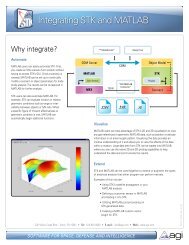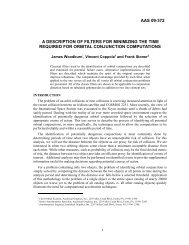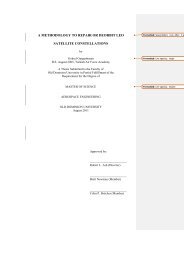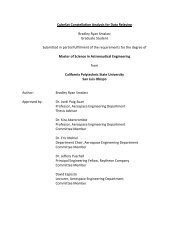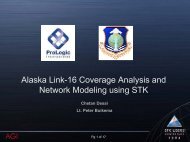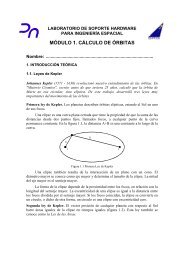SPACE WEATHER - AGI
SPACE WEATHER - AGI
SPACE WEATHER - AGI
- No tags were found...
Create successful ePaper yourself
Turn your PDF publications into a flip-book with our unique Google optimized e-Paper software.
Section II: Radiation Effects© SSS Educational Series 2012Of relevance to potential work under this project is the problem of doseenhancementunder electron or bremsstrahlung radiation where there areboundaries between materials of widely differing atomic number [6].3.1.2 Displacement DamageDEnergetic particles such as neutrons, protons, electrons, a-particles and heavy ionscan create damage in semiconductor materials by displacing atoms in the crystallattice. Secondary electrons produced by high-energy photons will also producedisplacement effects. The result is that stable defect states are created within theband gap that can give rise to any of the five effects depending on the temperature,carrier concentration and the location at which the defect resides [7]:• Generation of electron-hole pairs (leading to thermal dark current in detectors);• Recombination of electron-hole pairs (leading to reduction of minority carrierlifetime and effects in LEDs and laser diodes);• Trapping of carriers, leading to loss in charge transfer efficiency in CCDs(minority carrier trapping) or carrier removal (majority carrier trapping);• Compensation of donors or acceptors, also leading to carrier removal in somedevices (for example the resistance in a lightly doped collector in a bipolartransistor can increase);• Tunneling of carriers, leading to increased current in reverse biased junctions -particularly for small bandgap materials and high electric fields.It is now well established that the amount of formation of defect clusters depends onthe particle type. Electron irradiation gives primary knock-on atoms (PKAs) with lowrecoil energies and hence leads to almost exclusive production of point defects;whereas neutrons give a flat PKA spectrum and a much greater proportion of clusterformation. For protons the situation is in between [6].3.1.3 Single Event EffectsESingle event effects arise from the interaction of single particles (e.g. protons,neutrons or heavy ions), see Figure 8 (a), with the semiconductor causing eithertransient or permanent effects:• Single dark current generation centers (spikes) and single electron traps inimagers (permanent) due to individual lattice defects such as vacancyphosphorouscomplexes and divacancies.• Single event upset in memories (i.e. bit-flips leading to change of storedinformation.• Single event transients in imagers or linear circuits (i.e. a current transient whichcan be interpreted as a false signal or be propagated to cause an output error incombinational logic).12



